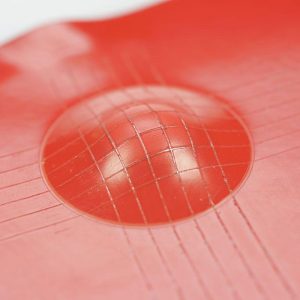Cupping test and its role in coating evaluation
Abstract: Cupping test is a method used to evaluate the ductility, adhesion and flexibility of a coating when the substrate is deformed. This paper introduces the scope, instrument and material of cupping test, and the measurement method and result presentation. This test is an indispensable test item for coatings that need to be post-formed in industrial manufacturing. The national standard GB/T 9753 and international standard ISO 1520 also provide relevant specifications and guidance.
1. Introduction
In the coating industry, it is very important to evaluate the performance and applicability of the coating. Cupping test is a common method used to evaluate the ductility, adhesion and flexibility of a coating when the substrate is deformed. This paper will detail the contents of the cup drawing.
2. Instruments and materials
The instruments and materials required for the cupping test are as follows:
Cup process testing machine: can be manual or hydraulic type. The key parts include a hard smooth spherical punch and a circular formwork gripper. Test process can be by binocular stereo microscope or a magnifying glass to observe.
Steel plate: thickness of 0.30~1.25mm, width and length of not less than 70mm.
Magnifying glass: 10x magnification.

Cupping test and its role in coating evaluation
3. The method
3.1 Preparation Before the test, the coating test plate shall be painted and dried, and the state shall be adjusted at a temperature of (23±2)°C and a relative humidity of (50±5)% for at least 16 hours.
3.2 Test procedures
The test plate is fixed between the retaining ring and the die so that the coating faces the die. Adjust the test plate so that the intersection point between the central axis of the punch and the test plate is not less than 35mm from each side of the test plate.
Open the testing machine so that the punch is pushed to the test plate at a constant speed, so that the test plate forms a dome shape with the coating facing out until the specified depth is reached or the coating cracks or separates from the substrate.
Cupping test and its role in coating evaluation
4. Result representation
According to different test situations, the results can be expressed as follows:
When testing in accordance with the provisions, the stamping depth, it is after the required depth, observe whether the coating cracking or separation from the substrate, according to the evaluation standard to judge passed or not passed.
When the test is carried out at the minimum depth causing damage, the stamping depth is gradually increased to the minimum depth at which the coating begins to crack or separate from the substrate as the result.
5. Reference standards
This test method refers to the following national and international standards:
The national standard GB/T 9753 “paint and varnish cup drawing test”.
International standard ISO 1520 “paint and varnish cup drawing test (second edition)”.
Cupping test and its role in coating evaluation
Conclusion
Cupping test, as a common method for evaluating coating properties, can evaluate the ductility, adhesion and flexibility of the coating when the substrate is deformed. By performing such tests on coatings, it is possible to better understand the performance of the coating in actual use, which can guide the subsequent processing and application processes in industrial manufacturing.
